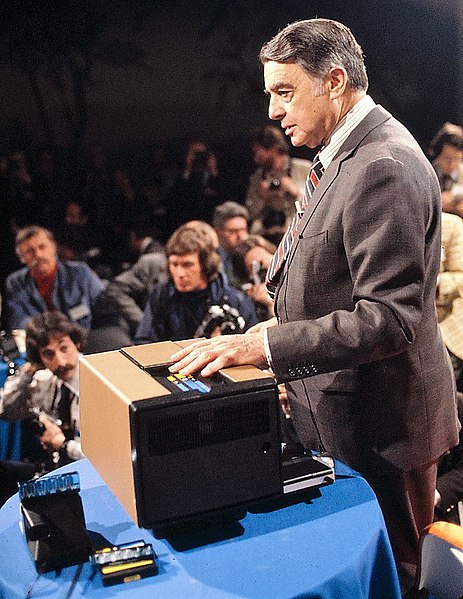Polaroid was a brand connected with instant photography in the mid-20th century. Polaroid transformed how people collected and shared memories with their renowned instant cameras and self-developing film. Despite its initial success and pioneering attitude, Polaroid eventually failed to keep up with the changing technology world, and its once-dominant market position diminished. In this blog, we will look at Polaroid’s growth and collapse and the significant elements that contributed to its death. Polaroid’s story is a cautionary tale about the dangers of complacency and the significance of flexibility in an ever-changing corporate market, from technology failures to strategic errors.
The Polaroid Company
Edwin H. Land established Polaroid, an American company known for its pioneering work in instant photography, in 1937. Land’s discovery of the Polaroid polarizing polymer led to the creation of the first instant camera, the Land Camera, in 1948. Polaroid expanded under Land’s leadership, achieving a peak employment of 21,000 in 1978 and a high revenue of $3 billion in 1991.
However, following Land’s departure from the company in 1981, Polaroid began to decline, culminating in its bankruptcy in 2001. Following the sale of its assets, a new Polaroid company was formed, which changed hands several times before being acquired by Polish billionaire Wiaczesaw Smookowski in 2017. Impossible Project, which has been making instant films for older Polaroid cameras since 2008, was able to rebrand as Polaroid Originals in 2017 and eventually as Polaroid in 2020 as a result of this acquisition.
The History of the Polaroid Company
Edwin Land and George W. Wheelwright III created the original Polaroid Corporation in 1937 in Cambridge, Massachusetts. Land, a scientist, was the company’s first CEO and is widely regarded as the pioneer of instant photography. He was the business’s CEO for 43 years and is credited with transforming Polaroid from a modest research and marketing organization into a high-tech company.
Polaroid first reached the market with polarized sunglasses, which arose from Land’s self-directed research into light polarization. The company used its patents for polarizer technology to develop items like 3-D movies and military dog protection goggles. Polaroid invented and manufactured various devices for the military forces during WWII, including an infrared night-viewing gadget.
Land conducted the first public display of his innovative Land Camera, which contained all of the processes of a darkroom inside the film itself, in February 1947. Until the SX-70 was introduced in 1972, the user had to manually release the film, pull a tab, and peel the negative from the finished positive print. The SX-70 was the first model to eject the print automatically. Land’s pioneering invention in instant photography propelled Polaroid to market domination for several decades.
Polaroid purchased the B B Chemical Company building at 784 Memorial Drive in Cambridge, Massachusetts, in the 1940s, and it became its headquarters. In 1982, the Streamline Moderne-style building in Cambridge, Massachusetts, was added to the National Register of Historic Places.
When Kodak introduced its instant film cameras in 1976, Polaroid sued for patent infringement, accusing the corporation of stealing its proprietary instant photography method. The litigation lasted 10 years, and total sales of instant cameras increased from 7.4 million in 1976 to 14.3 million in 1978 in the two years following the lawsuit. The court eventually decided in favor of Polaroid, ordering Kodak to stop producing instant photographs and pay Polaroid $909.5 million of the $12 billion sought.
Polaroid’s Downfall
Due to the growing popularity of videotape-based systems, Polaroid failed to introduce the Polavision camera in 1977. The corporation incurred an $89 million loss, prompting the departure of its chairman, Edwin Land. Polaroid switched away from consumer photography in the 1980s and attempted to penetrate the electronic video business by releasing its own brand of videotapes. However, due to the introduction of new technologies that altered the photography industry, the company was forced to make significant changes, including the layoff of thousands of employees and the closure of factories.
With the PDC-2000 in 1996, Polaroid was an early manufacturer of digital cameras, but it failed to obtain a considerable market share in that area. It also produced 35 mm multi-format scanners, such as the 1999 Polaroid SprintScan 4000 35 mm scanner and the 2000 Polaroid PrintScan 120. However, the entire line was discontinued when Polaroid declared bankruptcy in 2001. The corporation sold its historic headquarters building and adjacent property to The Bulfinch Companies for $10 million before bankruptcy.
Filing of Bankruptcy
The original Polaroid Corporation filed for Chapter 11 bankruptcy protection in 2001, and the majority of the company was sold to Bank One’s One Equity Partners within 10 months. The new company was called Polaroid Holding Company, and it did business under the same name as its insolvent predecessor. However, the process resulted in large bonuses for executives while stockholders and employees received nothing, resulting in widespread criticism.
The old Polaroid Corporation changed its name to Primary PDC, Inc. as part of the settlement and obtained around 35% of the “new” Polaroid, which was to be divided among its unsecured creditors. Primary PDC was still in Chapter 11 bankruptcy protection in 2006, although it had no commercial operations or employees.
Senior management’s failure to predict the impact of digital cameras on Polaroid’s film business is primarily blamed for the company’s demise. The success trap is a term used to describe this type of managerial failure.
The Three Main Points Why Polaroid Failed as a Company
1. Failure to Keep Up with the Market’s Needs and Wants
Polaroid has been involved with digital photography since the 1960s, and by the 1970s, the corporation had captured 15% of the camera market in the United States. The company has invested extensively in research and development over the years, filing hundreds of patents for quick imaging solutions. By 1989, digital imaging accounted for roughly 42% of its R&D spending.
Polaroid, on the other hand, while being digital cameras’ top seller in the late 1990s, failed to profit on its own research. The leaders of the corporation were betting that people would constantly desire hard-copy prints, which was a colossal error. This choice was made as a result of a failure to do sufficient market research, which contributed to the company’s demise.
This anecdote is important because it emphasizes the significance of staying current with technical breakthroughs and responding to changing market situations. Polaroid leadership failed to realize the relevance of digital photography and relied on antiquated technologies, eventually leading to the company’s demise. It serves as a reminder that even the most successful businesses can fail if they fail to innovate and adapt to changing circumstances.
2. Too Late to Innovate Something New
Polavision was a highly important product to Polaroid’s creator, Edwin Land, and he invested extensively in it, both financially and in terms of time. The product concept was first conceived in the 1960s, and it took decades to create. The Polavision technology was based on the Dufaycolor process, which was established in the early twentieth century by French chemist Louis Dufay. The Dufaycolor process produced color images using a three-color additive technique, as opposed to the subtractive process employed by other color film systems.
Despite technological advances and efforts, Polavision was not a success with consumers. One of the primary reasons behind this was that it was released at a time when other similar items were already on the market. Furthermore, the product was expensive, and the image quality was subpar. As a result, Polavision resulted in a major loss for the company, and it started a trend inside Polaroid, where management grew cautious about releasing revolutionary products.
The demise of Polavision had a tremendous impact on the culture and decision-making processes of the organization. Executives at Polaroid became more risk-averse, and they were hesitant to invest in new technology or products that could fail. This aversion to change eventually led to the company’s demise, as it failed to react to shifting market trends and the introduction of digital photography. It was too late for them to recognize their error, and the company had already declared bankruptcy.
3. Too Complacent to Not Expand Its Business
Polaroid’s reliance on instant film led to a lack of diversification, which harmed the corporation in the long run. As a result, they passed up opportunities to broaden their product offering and capitalize on developing technologies.
Executives of the company, notably founder Edwin Land, were unduly focused on instant film, the company’s major source of revenue, and were hesitant to invest in other areas, such as electronics. This fixation with instant film led to substantial financial mismanagement, including significant investments in digital photography R&D that were not capitalized on by the corporation.
Despite the fact that Polaroid’s R&D department had been working on digital photography since the 1960s and the firm was the top seller of digital cameras in the late 1990s, the company failed to make the transition to hardware-focused goods when digital cameras became popular. This was primarily due to the executives’ mistrust of innovation and releasing potentially unsuccessful items.
The takeaway here is that businesses must balance their focus on core products with investments in emergent technology. While keeping their cash cow is critical, investing in something without a genuine desire to profit from that investment is a bad move. Polaroid’s experience highlights the significance of looking ahead, embracing change, and remaining adaptable.
These are just three of the primary reasons why Polaroid failed as a business. The downfall of Polaroid is a textbook example of a corporation that relied too heavily on previous accomplishments, became complacent, and was unable to anticipate the future. Despite having a head start in digital photography, the company’s executives continued their traditional instant film business rather than completely commit to the technology.
This lack of creativity, along with poor financial management and a reluctance to take risks, finally contributed to the company’s demise. The story of Polaroid serves as a reminder that to survive and grow in a competitive market, businesses must be watchful, adapt to changing circumstances, and be willing to take measured risks.






